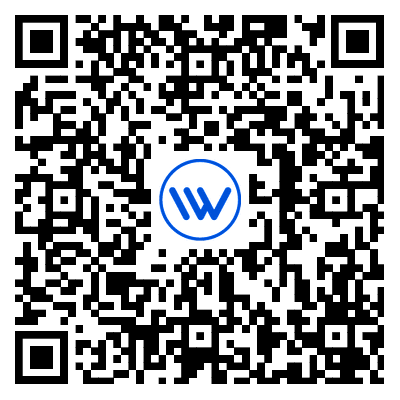Fully open all functions | Lerwee O&M intelligent agent free version out now
ecently, with the release of the Lerwee operational and maintenance agent, many users have been attracted by its cool features and exquisite interface design. Now, the free version of the Lerwee operational and maintenance agent is also available! It’s not just a skin refresh; more importantly, we have made all features freely accessible this time!
Lerwee Operational and Maintenance Agent: Monitoring Capabilities – Permanently Free and Fully Open
01 Full-Stack Monitoring
The free version offers complete monitoring capabilities, supporting the monitoring of all types of IT resources, including servers, operating systems, databases, network devices, storage, middleware, links, virtualization, cloud platforms, containers, IoT devices, and GPUs, covering IaaS, PaaS, SaaS, and IoT environments. (Note: The monitoring capability supports 20 licenses by default, with no license limits for probes, APs, and virtualization.)
Leveraging LeWei’s self-developed Perseus collection, LeWei has built a massive indicator system covering over 100,000 indicators. It can also integrate with mainstream third-party monitoring data sources, such as eBPF, Prometheus, and Zabbix, and supports unified management of agents (e.g., agent health checks, batch imports, batch and manual installations, circuit breaker management, and automatic registration). Additionally, it supports monitoring GPU status and performance indicators (GPU utilization, dedicated memory, shared memory, temperature, current power, etc.) to detect abnormal loads.
Furthermore, through LeWei’s self-developed genetic technology and hybrid protocol discovery, it can automatically discover both IT-innovated and non-IT-innovated software and hardware resources, including cloud platform discovery (e.g., Huawei Cloud, Alibaba Cloud, Tencent Cloud, etc.).
02 Centralized Alarm Management
Visual centralized alarm management supports configuring different alarm levels with sound notifications and pop-up reminders, enabling engineers to quickly focus on fault information processing.
Multi-channel notifications: Supports message push channels such as SMS, email, WeChat, DingTalk, and scripts, allowing users to complete operational and maintenance tasks without constantly staying at the monitoring system desktop.
Intelligent alarm suppression: Allows users to customize the suppression of non-critical and repeated alarms, automatically filtering out the same alarm events within a set period, effectively reducing alarm noise, improving operational efficiency, and focusing on core issues.
Alarm association topology analysis: Supports associating business topologies and network topologies to quickly locate the business scope affected by faults; integrates with CMDB to obtain information about faulty devices, including responsible persons, contact numbers, affiliated data centers, cabinet information, and maintenance vendors.
Alarm association indicator analysis: When an alarm is triggered, it can automatically associate and analyze relevant resource indicators, presenting multi-dimensional data simultaneously to assist in quickly locating the root cause.
03 Network Topology
The long-awaited network topology feature is now open! It automatically discovers network devices, servers, and storage based on network protocols and generates relationship diagrams. Network resource anomalies can be presented through bandwidth utilization, trend traffic, and alarm flashing, enabling quick location of network faults.
04 Visualization
Supports screen projection functionality, allowing users to flexibly configure projection views according to their management needs, such as host system management views and database monitoring management views, to achieve multi-scenario operational and maintenance management modes.
The system comes with multiple layout options and supports drag-and-drop layout adjustments. It provides a rich variety of display styles, including line charts, dashboards, circular charts, pie charts, bar charts, wave charts, and topology diagrams, and supports data drilling.
05 Knowledge Base
When dealing with alarms for different resources, such as server performance, hardware health, log status, log keywords, process performance, and database performance, it enables the accumulation of operational and maintenance solutions. When a fault occurs, the system can automatically recommend historical similar scenarios or alarms and reuse historical solutions.
06 Report Management
Provides a variety of scenario-based reports, including real-time reports, TOPN reports, traffic reports, daily and weekly reports, custom reports, host performance reports (identifying zombie machines), graphical reports, inspection reports, and availability reports.
It also supports report export and sharing operations, as well as self-subscription and proxy subscription, with scheduled report delivery to email addresses.
Asset Management Capabilities: Fine-Grained Management and Resource Visualization
The asset management capabilities of the Lerwee operational and maintenance agent mainly rely on LeWei CMDB, which focuses on fine-grained model management, resource visualization, event integration, and compliance automation. It aims to provide enterprises with a more powerful, flexible, and intelligent configuration management database solution, significantly improving IT operational and maintenance efficiency and management levels.
Model Management: Fine Control and Flexible Expansion
01 Introduction of Parent Models and Relationship Openness
The introduction of the parent model concept is used to define common attributes and relationships, standardize configuration item classification, achieve inheritance and extension, and simplify data management, optimizing the model hierarchy structure.
At the same time, parent models are open to relationship-based references and enumerations, enabling cross-level topological associations and greatly enhancing the inter-model correlation and data reuse capabilities. Enumerated lists are used to restrict the value ranges of certain attributes, ensuring the规范性 (standardization) of child model data.
02 Enhanced Model Relationships
Supports the establishment of relationships between a model and itself, allowing direct relationships between different instances of the same model. This simplifies model design while meeting more complex topological structure expressions (e.g., device cascading).
03 Global and Local Attributes
Global attributes: Define model-level universal attributes applicable to all instances of the model, ensuring consistency and standardization of core data. For example, using a global attribute to define the “operational and maintenance responsible person” field for all servers.
Local attributes: Support dynamically adding and managing attributes in specific model instances or business scenarios, achieving fine-grained and scenario-based attribute management to meet complex and changing business needs. For example, using a local attribute to define the “temporary responsible person” field for development and testing servers, which is only valid locally.
04 Enhanced Attribute Types
Supports IP address segment attributes for more precise management of network resources.
Supports phone number attributes to完善 (complete) basic information management.
05 Optimized Data Pushing
Supports pushing structured array data to separate instances, enhancing the flexibility and integration capabilities of data processing.
06 Configurable Change Records
Users can customize change tracking strategies for key attributes (e.g., contracts, maintenance, responsible persons, affiliated businesses), making audits clearer.
Data Center View: Panoramic Visualization and Intelligent Management
01 Planar Layout Display
Supports displaying data center planar layout diagrams, providing a more intuitive and realistic overview of the physical environment.
Meanwhile, in the U-position overview interface, empty U-positions can directly bind devices such as servers, network devices, and storage. It also supports manual dragging to reorder U-position abnormal devices, making device management smoother.
02 Configurable U-Position Conditions
Allows configuring U-position condition rules for device placement (e.g., must be in the same U-position, prohibited from being in the same U-position), improving the standardization and accuracy of cabinet space planning.
03 Customizable Global Styles
Supports customizing global font sizes, font colors, and cabinet capacity percentage display colors, making the visualization effects more in line with user habits and preferences.
04 Device Filtering and Drilling
The total device list supports filtering by model to quickly locate specific types of devices. At the same time, the device count display supports drilling down to view specific device lists, making analysis more convenient.
Event Subscription: Multi-Channel Push and Efficient Integration
01 Multi-Channel Push and Efficient Integration
LeWei CMDB 8.0 supports pushing configuration item change event notifications through interfaces, Kafka, and RabbitMQ. Enterprises can choose the most suitable integration method according to their own technology stacks and needs, achieving seamless integration with monitoring, automation, log analysis, and other systems, and building a more agile operational and maintenance response chain.
Compliance Checking: Automated Upgrades and More Powerful Validation
01 Expanded Notification Methods
Adds a [script-based] notification method, allowing the execution of custom scripts for complex notification logic or in-depth repair operations, meeting personalized compliance processing needs.
02 Automated Relationship Maintenance
Adds an automatic update function for model relationship configuration items, ensuring that the compliance status of related configuration items can be automatically and timely re-evaluated after relationship changes.
03 Regular Expression Validation
Through custom configuration check rules, it periodically checks for violations in asset data, such as whether configuration parameters are required or whether IPs are empty. It supports regular expression validation methods and also supports cross-model and multi-path data audits.
Resource Reports: Custom Analysis and Insightful Visualization
Custom reports: Provides powerful self-service data analysis and visualization capabilities.
Rich visualization components: Supports creating various chart types such as bar charts, line charts, pie charts, circular charts, and tables. Users can freely drag fields, configure filtering conditions, and easily generate required resource statistics and analysis reports, empowering data-driven decision-making.
Asset Recycle Bin: Intelligent Recycling and One-Click Restoration
Adds a recycle bin function, supporting intelligent recycling operations for scrapped and disabled assets. It also supports one-click restoration and full lifecycle tracing, building a complete asset management closed loop from inventory to scrapping.
Limited-Time Experience: AI Features and Business Insight Features
It is particularly worth mentioning that all free version users can use the AI features (requiring a 70B large model environment) and business insight features for free for 90 days.
01 AI Features
Includes root cause analysis, intelligent alarm analysis, IT resource intelligent analysis, business topology analysis, network topology analysis, and new human-computer interaction.
Demonstration of Root Cause Analysis Effect
02 Business Insight
Includes intelligent topology discovery, business observability, SLO indicator monitoring, business performance monitoring, business health status, and observation dashboards.
Business Topology Effect
Seamless Upgrade Path: 90-Day Trial Experience and Seamless Upgrade
After the 90-day trial period ends, users can choose to pay for the AI and business insight features. We provide a smooth upgrade path and technical support.
Download and Experience Now: Full Features, Permanently Free
Visit the LeWei community now to download the free version of the Lerwee operational and maintenance agent and start your intelligent operational and maintenance journey!
- Monitoring new forces vs. traditional powerhouses: Why can LeWei intelligent monitoring replace Tivoli?
- Lerwee NMS VS Solarwinds NPM: Network Performance Monitoring (Part 2)
- How IT Monitoring Systems Reduce Suspicious Activity Rates for Enterprises
- Heavy | Lerwee self-developed collection platform Perseus officially released
- Lerwee NMS vs. Solarwinds NPM: Network Performance Monitoring (Part 1)
- How to replace SolarWinds to ensure enterprise IT security?

